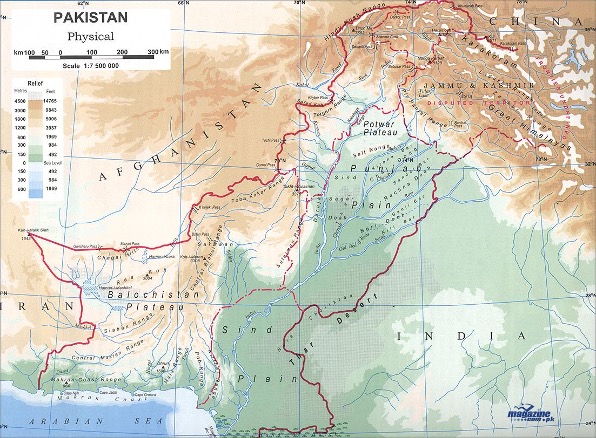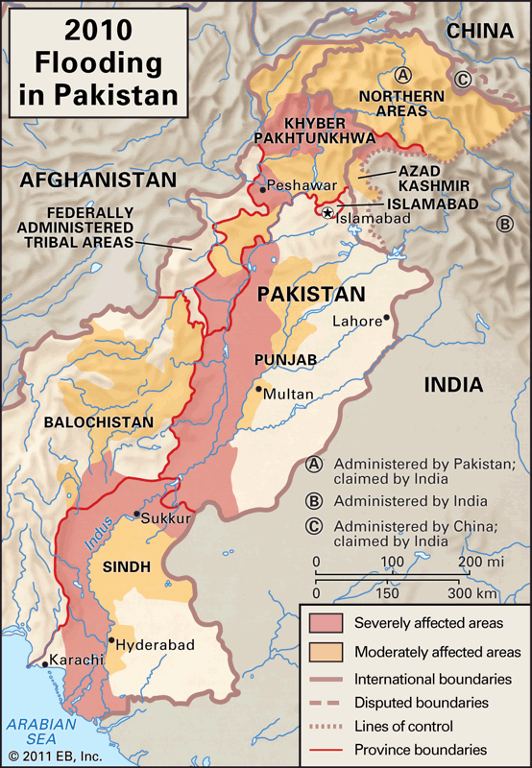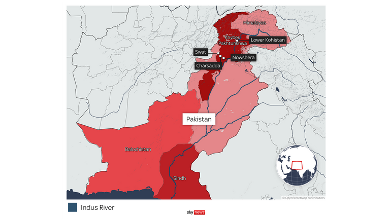Extreme temperatures and heavy monsoon rains in Pakistan have resulted in the most severe flooding seen in more than 100 years: as of early September, up to one-third of the country was underwater. The disaster has left thousands of people dead or injured, and millions displaced and at high risk of malnutrition and disease.
Pakistan’s Climate Vulnerabilities
Pakistan’s unique geography makes it especially vulnerable to shifting weather patterns. The Southeast Asian nation is often counted among the top 10 countries projected to be most heavily impacted by climate change.

Increasingly hotter heatwaves are impacting the mountainous north, leading to drought and crop failures. This has a destabilizing effect, making the nation more vulnerable to internal conflicts. Additionally, many areas of the country are prone to flooding and landslides during the annual monsoon season.
In 2010, a deluge of rain flooded the Indus River, which runs through the heart of Pakistan. The result was widespread destruction across the country. More than a million people lost their homes.

After the 2010 disaster, the Pakistani government improved its efforts to monitor and mitigate the effects of climate change. However, economic strains and disagreements between national and provincial governments have hindered policy implementation.
This year’s monsoon brought exceptionally heavy downpours due to an extended heatwave. Temperatures soared throughout the spring. April 2022 was the hottest on record in six decades, with some locations topping 120 degrees Fahrenheit during the day and nighttime lows in the 90s. High temperatures increased moisture saturation, as hot air can hold more moisture than cold air. Experts warned these conditions would intensify the upcoming monsoon season.
The heat also accelerated glacial melt, which caused several Pakistani rivers to swell. A rare low-pressure system over the Arabian Sea also intensified the rainfall.
Since the beginning of the rainy season, large swaths of the country have received more than three times the normal rainfall. By September, more than a third of the land had become submerged and a huge, 100km-wide lake had formed in Sindh Province. Landslides have washed away thousands of homes and left hundreds of thousands of people without shelter.

Assistance in Pakistan
Many international agencies, transnational charities and foundations have been operating in Pakistan for more than three decades. In that time, they have had to respond to multiple major disasters including the floods of 2010 that impacted more than 30 million people.
In addition to its disaster management efforts, these organizations also provide general medical treatment, vaccinations, and malnutrition prevention services.
In August 2022, Pakistan again required the deployment and assistance to the flood-prone areas around Pakistan to provide much-needed support and medical services.
Healing the injured through mobile clinics
Since August, flooding has pushed more than 600,000 people from their homes to displacement camps, many of which lack proper infrastructure causing outbreaks of infectious diseases.
Respiratory and skin infections are rife, and people are without adequate medical care. As many health centers and hospitals have been devastated by the flood, pregnant women are unable to access prenatal care.
In response, mobile medical camps were installed in remote regions of the country to ensure residents have access to preventative and emergency medical care. The mobile clinics also serve as supply distribution hubs.
Preventing water-borne pathogens
The severe flooding has also restricted access to clean water. Contaminated flood waters have leaked into the drinking water supply. Consumption of this polluted water have a higher risk of cholera and other water-borne diseases.
Pools of stagnant water contribute to a larger mosquito population, which are vectors for severe diseases. In the southern Sindh Province, nearly 4,000 people have contracted dengue fever.
The distribution of clean water, monitoring and treatment of stagnant water pools and mosquito nets are some of the basic things that need to be done.
Improving hygiene in makeshift shelters
Flood waters have destroyed thousands of public buildings and infrastructure, reducing sanitation services across several provinces. To escape rising flood waters, millions of people have set up informal settlements. Many people have no choice but to sleep without any sort of protection from the elements.
These makeshift camps have no infrastructure, including access to food, medical clinics, or running water. This is making hygiene incredibly difficult for the camp’s residents.
Within the first few days of the crisis, emergency response teams delivered more than 300 kits in Balochistan. Organizations were quickly ramping up their distribution capacity to reach hundreds of thousands of impacted people.
Help Needed for the Foreseeable Future
Many experts predict that the situation in Pakistan will worsen. Higher overall temperature and wide (from recent historical perspective) swings in temperatures create unsolvable problems. The monsoon season will continue to bring heavy rains. Poor crop yields and reduced water access may also stoke internal strife and instability. Flood waters may not subside for months. These problems isn’t going to be solved soon and will continue. That’s why longer terms plans are required to help the people most prone to the flood conditions.

